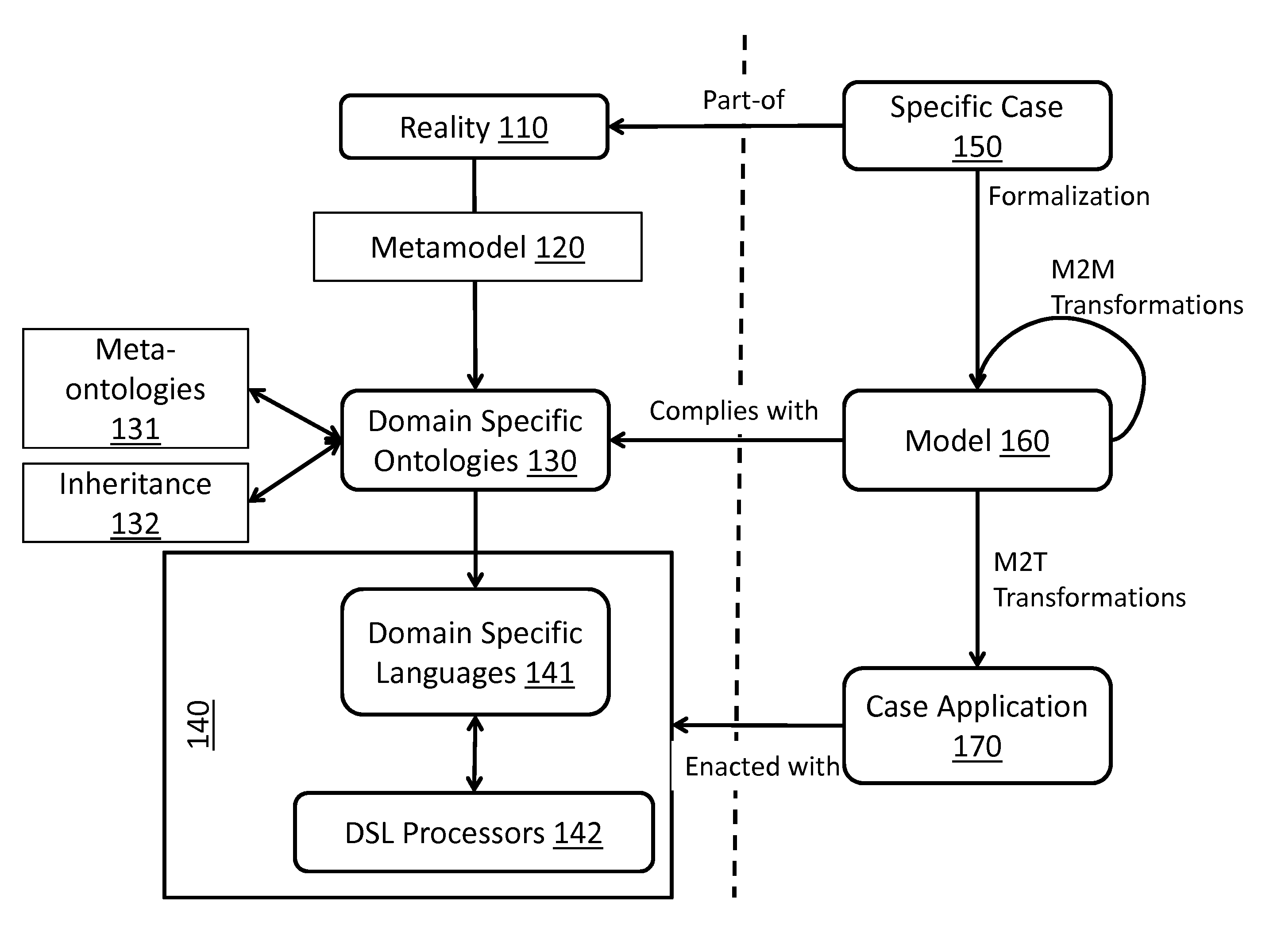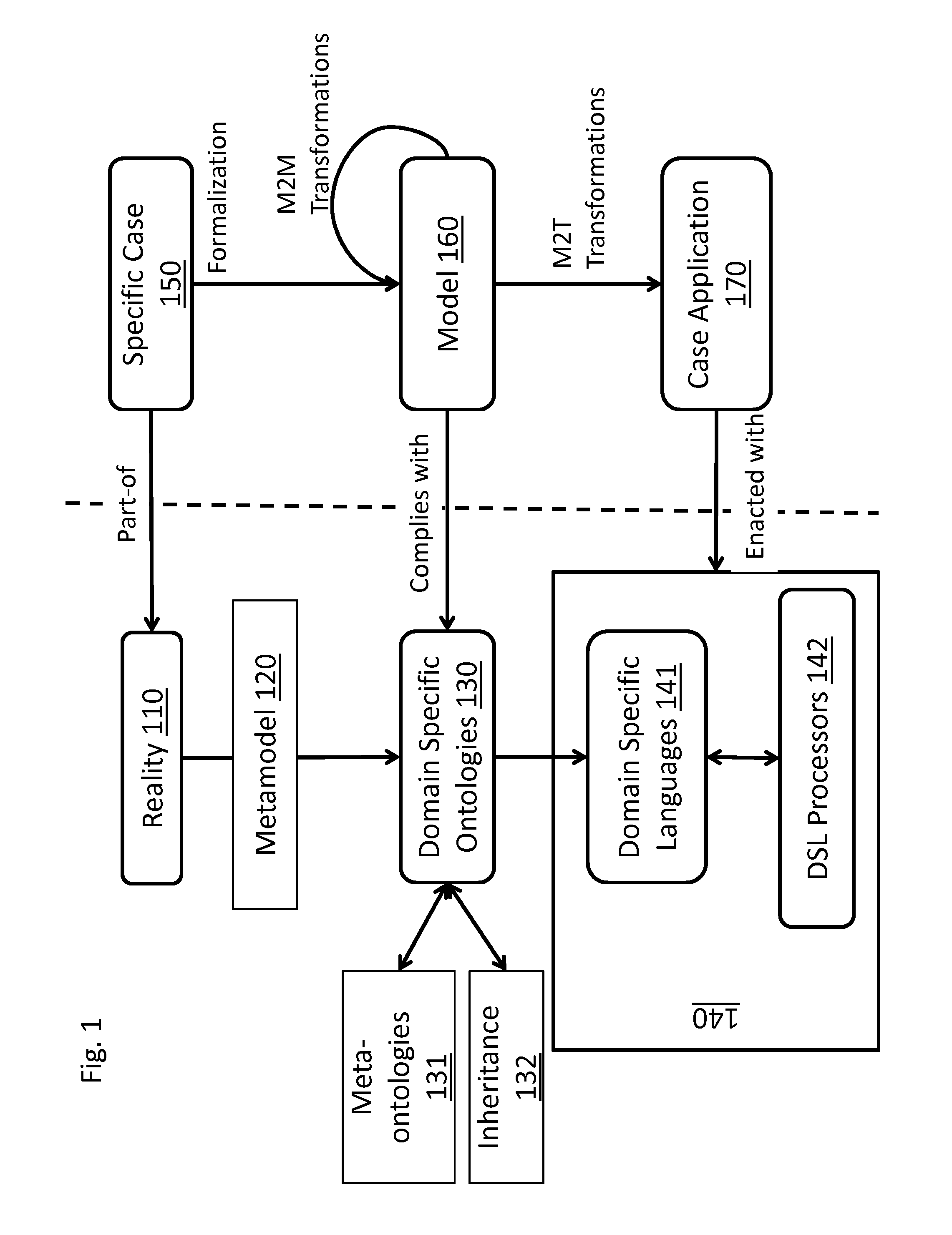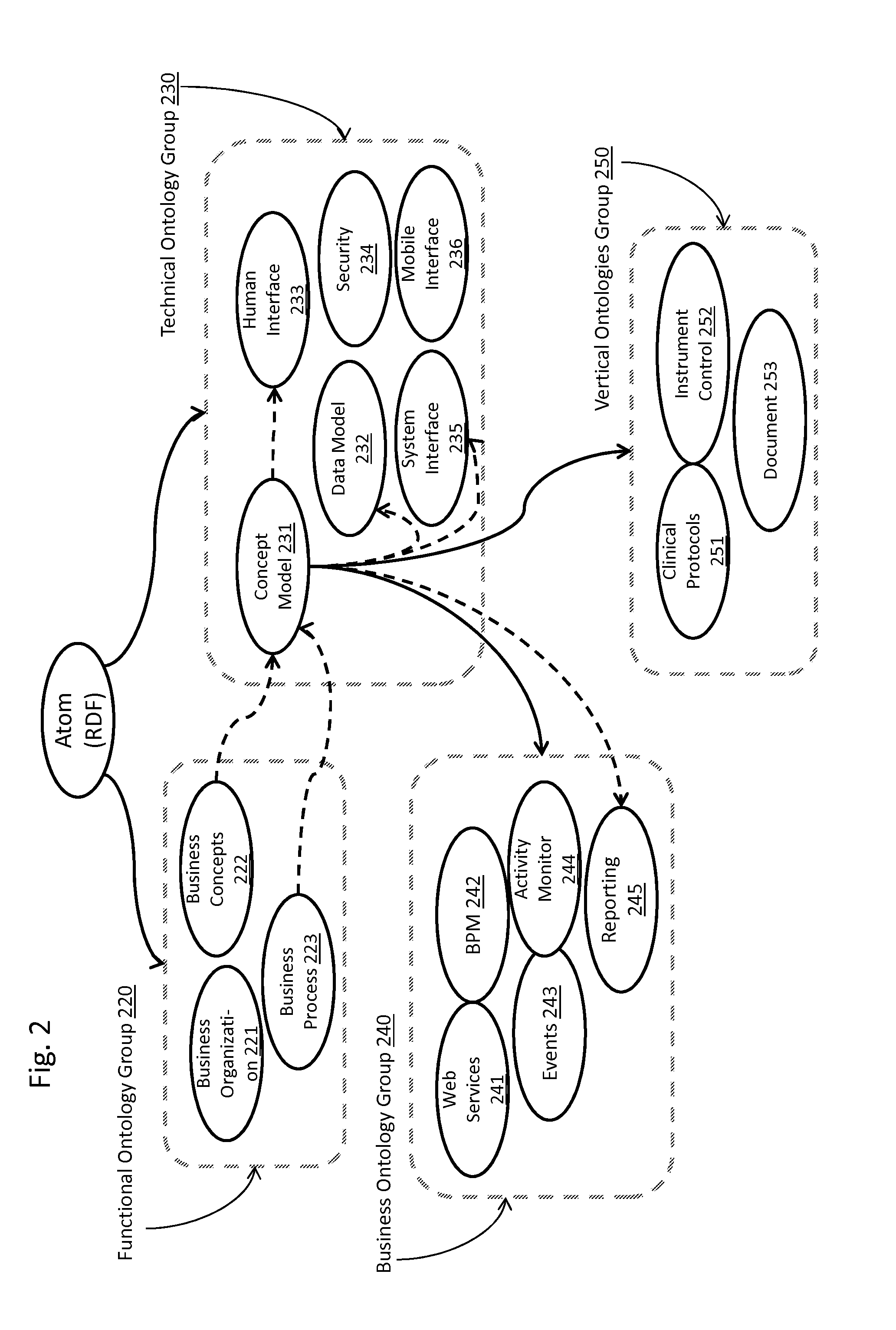Recursive ontology-based systems engineering
- Summary
- Abstract
- Description
- Claims
- Application Information
AI Technical Summary
Benefits of technology
Problems solved by technology
Method used
Image
Examples
specific cases 150
Specific Cases 150
[0032]Specific Cases 150 are examples of a Reality 110 that we want to analyze. For instance, within the domain of Business Applications a Procurement System for ABC Company will be a Specific Case. When we take the Specific Case and analyze it using the metamodel(s) 120 that we used for the embedding Reality 110, we can map the characteristics of the Specific Case 150 in terms of the Domain Specific Ontologies 130. For instance, we will describe business concepts (classes), user actions (human interfaces), etc. This description is a Model 160.
Models 160
[0033]A Model 160 is the description of a Specific Case 150 in conformance with a number of Domain Specific Ontologies 130, which are relevant for that Specific Case 150. Thus, Models 160 are sets of formal definitions about Reality 110 that are done following the formalisms defined by the Domain Specific Ontologies 130. The same reality can be described using different ontological layers (inheritance 132) or resour...
PUM
 Login to View More
Login to View More Abstract
Description
Claims
Application Information
 Login to View More
Login to View More - R&D
- Intellectual Property
- Life Sciences
- Materials
- Tech Scout
- Unparalleled Data Quality
- Higher Quality Content
- 60% Fewer Hallucinations
Browse by: Latest US Patents, China's latest patents, Technical Efficacy Thesaurus, Application Domain, Technology Topic, Popular Technical Reports.
© 2025 PatSnap. All rights reserved.Legal|Privacy policy|Modern Slavery Act Transparency Statement|Sitemap|About US| Contact US: help@patsnap.com



